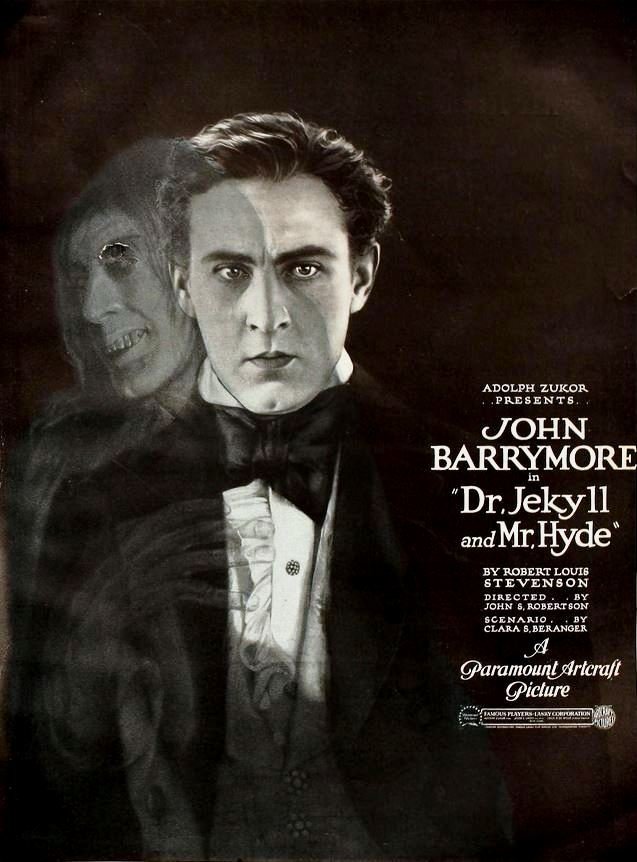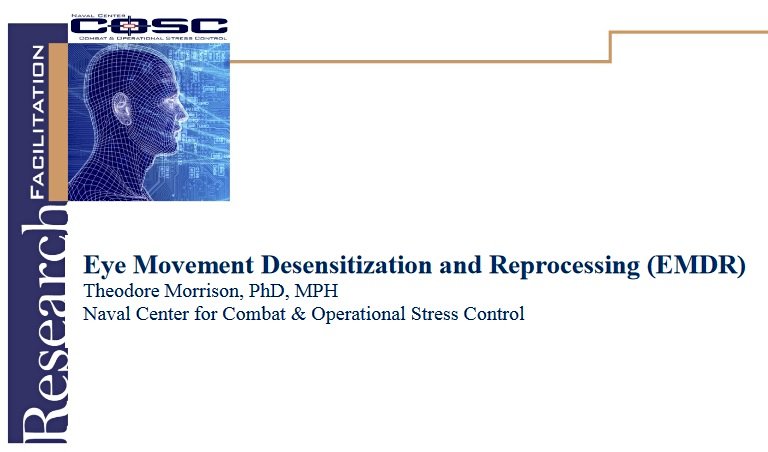Split Personality? A Conversation About Dissociative Identity Disorder

Image credit:Famous Players-Lasky Corporation / Paramount - Artcraft. Free of copyright restrictions.

Dr. Jekyl and Mr. Hyde (1931). The Three Faces of Eve (1957). Split (2016). Each of these movies popularized the concept of multiple personality disorder for a different generation of viewers. Audiences are intrigued by the idea that one person can be 'beside' themself. That two distinct, or three distinct personalities may emerge in one person, and that these personalities may disavow knowledge of, or responsibility for, the other.

The notion of a split personality is intriguing. But is it persuasive? Let's turn to science and see if there is evidence to support the notion of split personality.
Dissociative Identity Disorder
As I turn to the literature, I find not the term split, or multiple personality. Instead there is a psychological condition called 'Dissociative Identity Disorder'. Chapter 24 in the DSM-5, (American Psychiatric Association 2013) current Bible of the U. S. psychiatric community, lists and describes this disorder:
Dissociative Identity Disorder: "a disruption of identity characterized by two or more distinct personality states or an experience of possession"
Werewolf Image

Image credit: LovableNinja on Pixabay The legend of the werewolf may be an expression of a cultural fascination with dissociative personalities.

Much of the literature on this disorder describes the subjective experience of the individual. A patient reports feeling, or perceiving a specific psychological state. Is there objective validation of these subjective reports? Brain imaging, for example, that corresponds to the subjective experience? Apparently there is.
I found a study in the journal Neuroscience which explains changes in the brain of a patient, observed with fMRI imaging (functional MRI). This kind of imaging is used often to observe dynamic states, which would be the case with a patient 'switching' personalities.

Image credit: Fastfission. Used under a CC 3.0 license.
As a basis to their dynamic study (before a personality 'switch' took place), the researchers describe a patient with a smaller than normal hippocampus. This, researchers explain, is often the case in patients diagnosed with post-traumatic stress syndrome--and in patients diagnosed with DID (dissociative identity disorder). When personality switching occurred in the patient, researchers noted reduced activity on both sides of the hippocampus. This inhibition was more evident on the right side. There was also inhibition in other parts of the brain: parahippocampal, medial temporal regions, substantia nigra regions and the globus pallidus. When this scan was repeated during a subsequent 'switch', the same results were observed.

The study cited above was performed on one patient, in 1999. A more recent study, published in 2006, reports results of magnetic resonance imaging performed on fifteen patients, all women who had been diagnosed with DID. In each case, the scan revealed that, "Hippocampal volume was 19.2% smaller and amygdalar volume was 31.6% smaller in the patients with dissociative identity disorder, compared to the healthy subjects."
Artist's Impression of Dissociative Identity Disorder

Image credit: 04Mukti. Used under CC 3.0 license.
A Case History
An article published by the American Psychiatric Association describes the case of a patient named 'Sandra'.
Sandra was twenty-five years old when she was admitted to a hospital for psychiatric care. She was disoriented, and believed she was in another hospital. There were gaps in her memory. She would suddenly manifest changes in facial expression and mood. Sandra's alternate personality was named 'Mary'. In this character, the patient was calm and collected. 'Mary' was angry with Sandra and would abuse her--physically cut her with a knife.
Eventually, through psychotherapy and hypnosis, Mary and Sandra acknowledged each others presence and came to accept each other. Sandra examined early instances of abuse, which were believed to have led to her disorder. The report on Sandra ends with this diagnosis and prognosis:
She responded well to the combination of antidepressants and psychotherapy, and came to dissociate only rarely. Sandra began developing more stable and healthy relationships.


Image credit: Geralt on Pixabay. Public domain.
Diagnosis
According to the DSM-5 (as reported by Psychiatry online), the following symptoms may be either observed by a physician or reported by a patient:

1...marked discontinuity in sense of self and/or agency, accompanied by changes in affect, behavior, consciousness, memory, perception, cognition, and/or sensory-motor functioning

2...dissociative amnesia, a disruption in autobiographical memory...that includes gaps or difficulties in recall of everyday events, important personal information, and/or traumatic events.
Causes
Child Abuse Pyramid

Image credit: Charles Whitfield, M.D., Centers for Disease Control and Prevention. Copyright free The note under this illustration states: " Graph showing how adverse childhood experiences are related to risk factors for disease, health, and social well-being."
According to the Cleveland Clinic, clinicians believe, and treatment protocols are based on this belief, that Dissociative Identity Disorder arises from an attempt by the psyche to deal with serious trauma. Often this trauma occurred in childhood. An article by the Cleveland Clinic states:
By dissociating painful memories from everyday thought processes, a person can...maintain a relatively healthy level of functioning, as though the trauma had not occurred.
Often, an acute episode of the disorder can be triggered by an incident of extreme stress. This might be a traffic accident, or an illness. In some cases, the disorder may be triggered when the patient's children reach the age at which childhood abuse had occurred.

Treatment
Basic Tenets of Cognitive Behavioral Therapy

Image credit: Urstadt. Used under a CC 3.0 license. The notes under this diagram explain: "... how feelings, thoughts, and behaviors all influence each other. The triangle in the middle represents CBT's tenet that all humans' core beliefs can be summed up in three categories: self, others, future."

According to the National Alliance on Mental Illness--NAMI, though drugs are often prescribed for those who suffer from dissociative identity disorder, the drugs are not considered efficacious in treating DID. Rather, they are prescribed to treat symptoms that may accompany DID (comorbidities), such as anxiety.
Psychotherapy remains the treatment of choice for DID. NAMI lists the three most commonly used:

1.Cognitive Behavioral Therapy, CBT:"The goal of this therapy is to recognize negative thoughts and to teach coping strategies."

2.Dialectical Behavioral Therapy, DBT: This therapeutic approach tries to equip the patient with coping strategies. It involves,"individual and group work...encourages practicing mindfulness techniques such as meditation, regulated breathing and self-soothing."

3.Eye movement desensitization and reprocessing, EMDR: This treatment modality involves combining CBT techniques with "visual stimulation exercises".


Conclusion
I began this post with a light tone. But there is nothing light-hearted in the struggle for mental health. Although certitude among some critics is lacking in the diagnosis and treatment of this disorder (indeed, even in the existence of this disorder), the fact remains that people suffer.
Jean-Martin Charcot was the physician first credited with identifying 'multiple personality disorder'. He called it 'Hystero-Epilepsy'. There were skeptics at the time. That skepticism continues, even today.
Jean-Martin Charcot Treating Patients (at Salpetriere Asylum?)

Image credit: This file comes from Wellcome Images, a website operated by Wellcome Trust, a global charitable foundation based in the United Kingdom. Refer to Wellcome blog post (archive). License:Creative Commons Attribution 4.0 International.

A recent article published in the book, Evidence-Based Psychotherapy explains:
Given the controversial nature of dissociative disorders, we will proceed with the understanding that although patients may present with dissociative symptoms, questions linger regarding the trauma-based genesis of these symptoms and the validity of the diagnoses of DID and dissociative amnesia, in particular.
I'll end my post with the hope that questions surrounding the diagnosis and treatment of this syndrome will be answered. Because, those questions represent people in need. Whatever name is assigned to their distress, their distress is real. It must be addressed. That is, after all, the role and mission of medicine.

Selected Sources Used in Writing This Blog
1.https://link.springer.com/chapter/10.1007/978-1-4899-0310-5_16
2.https://psychiatryonline.org/doi/abs/10.1176/appi.books.9781585625048.gg24
3.https://www.psychologytoday.com/us/conditions/dissociative-identity-disorder-multiple-personality-disorder
4.https://www.researchgate.net/profile/Don_Condie/publication/12829283_Functional_Magnetic_Resonance_Imaging_of_Personality_Switches_in_a_Woman_with_Dissociative_Identity_Disorder/links/5508e29e0cf27e990e0d2907.pdf
5.https://www.denofgeek.com/movies/15-split-personality-movies-that-went-to-the-big-screen-together/
6.https://www.psychiatry.org/patients-families/dissociative-disorders/patient-story
7.https://www.researchgate.net/profile/Philip_Coons/publication/12476745_The_differential_diagnosis_of_epilepsy_pseudoseizures_dissociative_identity_disorder_and_dissociative_disorder_not_otherwise_specified/links/5440f1850cf228087b69ab05.pdf
8.https://www.ncbi.nlm.nih.gov/pmc/articles/PMC3233754/
9.https://www.cdc.gov/violenceprevention/aces/index.html
10.https://my.clevelandclinic.org/health/diseases/9792-dissociative-identity-disorder-multiple-personality-disorder
11.https://journals.sagepub.com/doi/full/10.1177/1755738012471029
12.https://www.nami.org/About-Mental-Illness/Mental-Health-Conditions/Dissociative-Disorders/Treatment
13.https://www.psycom.net/mchugh.html
14.https://www.atlasobscura.com/places/pitie-salpetriere-hospital
15.https://www.researchgate.net/publication/322097708_The_Treatment_of_Dissociation_The_State_of_the_Science_and_Practice
16.https://www.imdb.com/title/tt0022835/
17.https://www.imdb.com/title/tt0051077/?ref_=fn_al_tt_1
18.https://www.imdb.com/title/tt4972582/?ref_=fn_al_tt_1
19.https://www.livescience.com/44875-werewolves-in-psychiatry.html
Illustration credit not otherwise noted:
Masks from which accent GIF was made: Vector free, Pixabay


A very interesting topic. Reminds me of some Alfred Hitchcock movies and books that I have read many years ago. There is still much to learn about this subject. Very nice blog.
Hello @pokerm,
Thank you so much for that kind assessment of my blog. Maybe I should have mentioned "Psycho", one of the most influential movies of its time. Thanks for reminding me, and for visiting my blog.
https://twitter.com/A_G_Moore/status/1360122721808625670
https://twitter.com/A_G_Moore/status/1360123078752296961
Thanks A.G. for explanining this subject of dissociative disorders. Interesting how this condition may have to do with the size of the Hippocampal. "Hippocampal volume was 19.2% smaller and amygdalar volume was 31.6% smaller in the patients with dissociative identity disorder, compared to the healthy subjects.”
People do suffer greatly with these conditions and their families also.
Hi @redheadpei,
Thank you for visiting and for your generous tip. My understanding of the hippocampus is that it plays a vital role in emotions and memories. So, I guess it makes sense that there would be alteration there in a person experiencing profound personality changes. The tragedy of mental illness is that we understand it so poorly.
Thanks again for reading and commenting.
🌺💞🙂
@agmoore, one of your Hive friends wishes you a Happy Valentine's day and asked us to give you a new badge!
To find out who wanted you to receive this special gift, click here!
You can view your badges on your board and compare yourself to others in the Ranking
Check out the last post from @hivebuzz:
Thank you!
Thanks for your contribution to the STEMsocial community. Feel free to join us on discord to get to know the rest of us!
Please consider supporting our funding proposal, approving our witness (@stem.witness) or delegating to the @stemsocial account (for some ROI).
Thanks for including @stemsocial as a beneficiary, which gives you stronger support. Using the STEMsocial app could yield even more supporti next time.
Thank you very much @steemstem for supporting my blog!
@agmoore, I want to ask you a question, I have a doubt, because my collage if I am participating in the contest and one of the rules of the contest says: Participants must establish the account lmac as beneficiary of 20% to receive the help of our trace and to receive the prizes of the contest. and I checked and I still have not received the vote of lmac and that I put it. I don't understand. thank you and sorry for the inconvenience.
This post?
https://peakd.com/hive-174695/@pjpavan/little-red-riding-hood-let-5679a72ecc131
It looks like they came around.